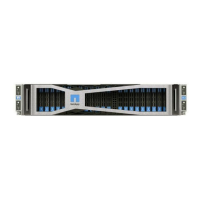• Add a new storage cluster asset
• Edit the stored credentials for a storage cluster asset
• Delete a storage cluster asset
Retrieve the installation ID and cluster ID of a storage cluster asset
You can use the REST API get the installation ID and the ID of the storage cluster. You need the installation ID
to add a new storage cluster asset, and the cluster ID to modify or delete a specific storage cluster asset.
Steps
1. Access the REST API UI for the inventory service by entering the management node IP address followed
by /inventory/1/:
https://[management node IP]/inventory/1/
2. Click Authorize or any lock icon and complete the following:
a. Enter the cluster user name and password.
b.
Enter the client ID as mnode-client.
c. Click Authorize to begin a session.
d. Close the window.
3. Click GET /installations.
4. Click Try it out.
5. Click Execute.
The API returns a list of all known installations.
6.
From the code 200 response body, save the value in the id field, which you can find in the list of
installations. This is the installation ID. For example:
"installations": [
Ê {
Ê "id": "1234a678-12ab-35dc-7b4a-1234a5b6a7ba",
Ê "name": "my-hci-installation",
Ê "_links": {
Ê "collection": "https://localhost/inventory/1/installations",
Ê "self": "https://localhost/inventory/1/installations/1234a678-
12ab-35dc-7b4a-1234a5b6a7ba"
Ê }
Ê }
Ê ]
7. Access the REST API UI for the storage service by entering the management node IP address followed by
/storage/1/:

